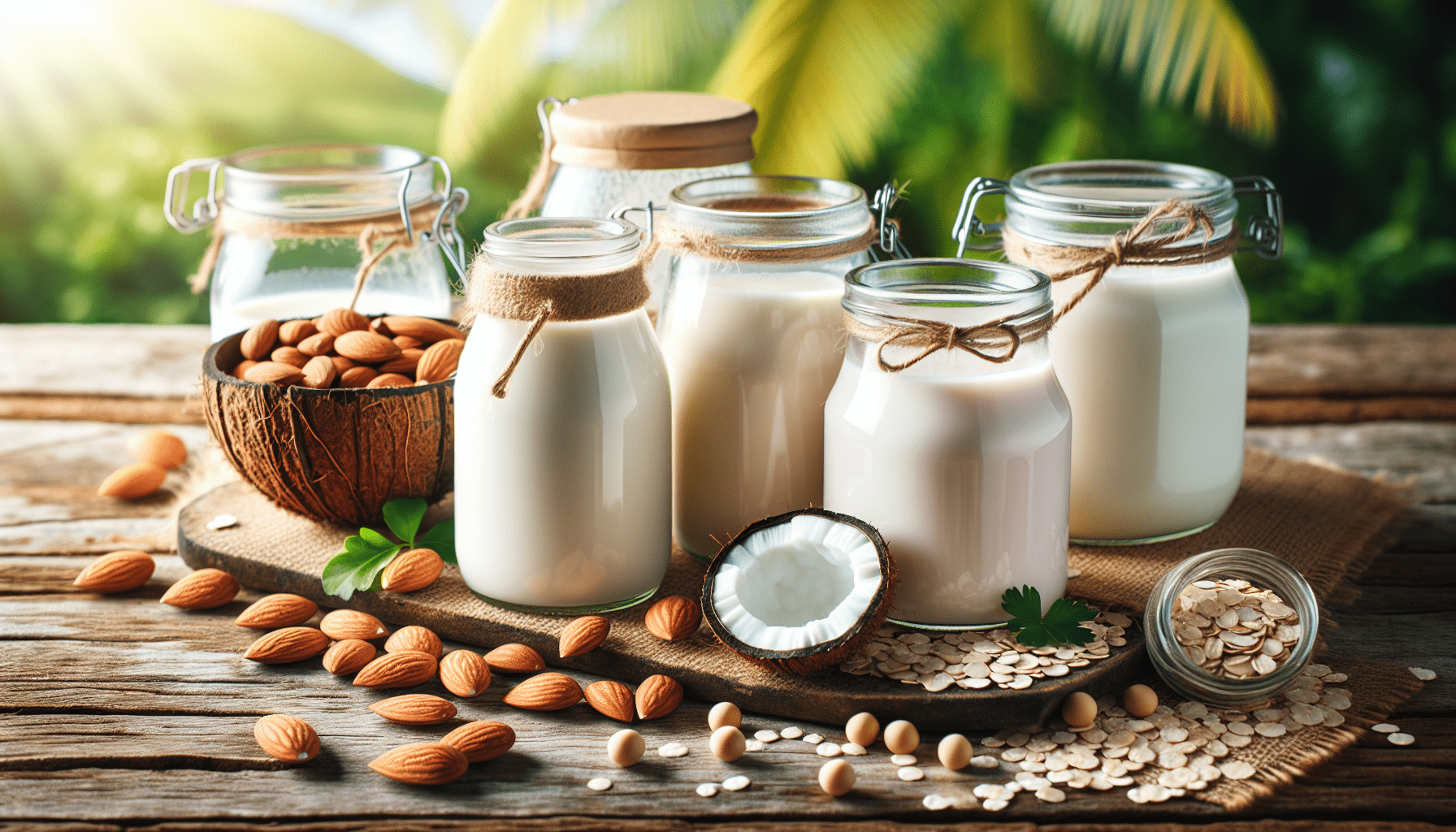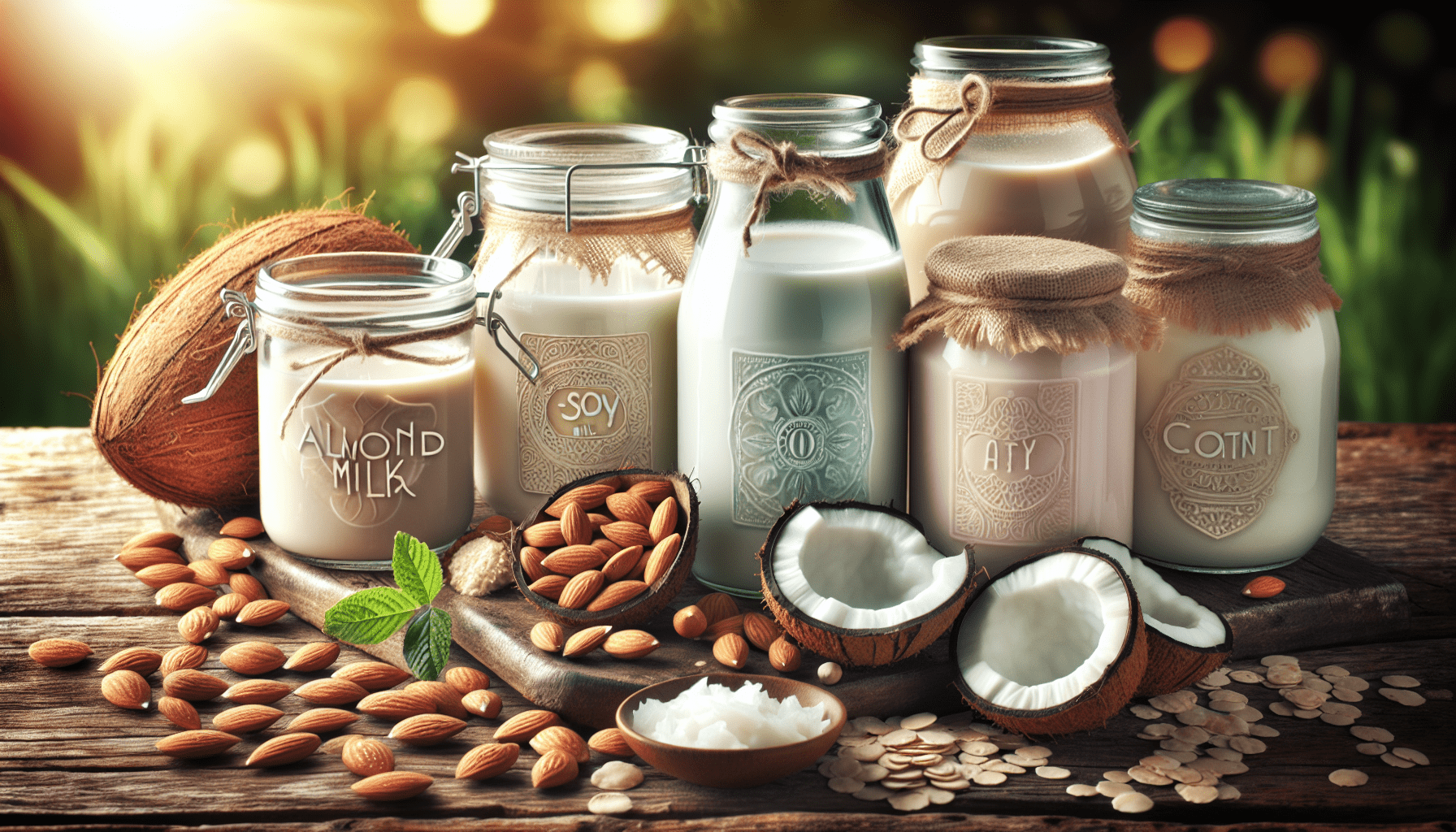Have you ever wondered about the best non-dairy milk options available for children with allergies? Navigating the world of milk alternatives can be quite challenging, especially when you need to ensure both the health and happiness of your little ones. Whether due to lactose intolerance, a dairy allergy, or a commitment to a vegan lifestyle, there are numerous reasons why children might need non-dairy milk. But with so many options on the market, it can be difficult to decide which one is right for your child.
In this comprehensive guide, we’ll explore a variety of non-dairy milk alternatives, discuss the nutritional benefits they offer, and consider any potential drawbacks. By the end of this article, you’ll have a clearer understanding of which non-dairy milk might best suit your child’s needs.

Understanding Dairy Allergies in Children
Before diving into non-dairy options, it’s crucial to understand what a dairy allergy is and how it differs from lactose intolerance. A dairy allergy is an immune reaction to proteins found in milk, often causing symptoms like hives, digestive issues, or even more severe reactions. On the other hand, lactose intolerance stems from the body’s inability to digest lactose, a sugar found in milk, leading to bloating, cramps, and diarrhea.
Common Symptoms of Dairy Allergy
Knowing the symptoms of a dairy allergy can help in early detection and management. Common symptoms include:
- Skin reactions such as rashes or hives
- Swelling of lips, face, or throat
- Respiratory issues such as coughing or wheezing
- Abdominal pain, nausea, or vomiting
If your child experiences these symptoms after consuming dairy, consulting a healthcare professional is crucial.
Nutritional Needs of Growing Children
Children in their growing years require a balanced diet rich in essential nutrients to support their development. Traditionally, cow’s milk has been a primary source of calcium and vitamin D, crucial for bone health. Therefore, when choosing a non-dairy alternative, it’s vital to consider whether it meets these nutritional needs.
Key Nutrients to Look For
Here are some essential nutrients you should look for in non-dairy milk:
- Calcium: Important for healthy bones and teeth.
- Vitamin D: Helps in the absorption of calcium and promotes bone growth.
- Protein: Essential for growth, repair, and overall development.
- Vitamin B12: Necessary for nerve function and the production of DNA and red blood cells.
Popular Non-Dairy Milk Options
Let’s explore some of the most popular non-dairy milk options available today. Each has its own unique characteristics, including taste, nutritional profile, and potential allergens.
Almond Milk
Almond milk is a popular choice due to its light flavor and low-calorie content. It’s often enriched with vitamins and minerals, making it a nutritious option for children.
- Pros: Low in calories and naturally rich in vitamins.
- Cons: May not be suitable for children with nut allergies.
Soy Milk
Soy milk is a powerhouse of nutrition, rich in protein, and often enriched with calcium and vitamin D.
- Pros: High in protein and fortified with essential nutrients.
- Cons: Some children may have soy allergies, and there are concerns about phytoestrogen.
Oat Milk
Oat milk is creamy and naturally sweet, making it appealing to children. It’s often fortified with calcium and vitamin D.
- Pros: No major allergens, and high in fiber.
- Cons: Higher in calories and carbohydrates compared to other options.
Rice Milk
Rice milk is hypoallergenic and can be a safe choice for children with multiple allergies.
- Pros: Least likely to cause an allergic reaction, often fortified with calcium and vitamin D.
- Cons: Lower protein content and higher in carbohydrates.
Coconut Milk
Coconut milk has a distinct flavor and a creamy consistency. It’s usually fortified with essential nutrients.
- Pros: Great flavor and aroma; low in calories.
- Cons: Low in protein, with higher saturated fat content.
Hemp Milk
Hemp milk is gaining popularity due to its rich nutritional profile that includes omega-3 fatty acids.
- Pros: High in omega-3s and plant-based proteins.
- Cons: Unique taste that might not appeal to every child.
Comparing Nutritional Profiles
To better understand these options, it can be helpful to compare their nutritional profiles side by side. Here’s a simplified table for quick reference:
| Milk Type | Calories | Protein | Calcium | Vitamin D | Fat Content |
|---|---|---|---|---|---|
| Almond | 30-50 | 1g | 30% DV | 25% DV | Low |
| Soy | 80-100 | 7g | 30% DV | 30% DV | Moderate |
| Oat | 120-130 | 3g | 25% DV | 15% DV | Moderate |
| Rice | 120-130 | 1g | 30% DV | 25% DV | Low |
| Coconut | 45-60 | 0g | 25% DV | 20% DV | High |
| Hemp | 60-80 | 2-3g | 25% DV | 20% DV | Moderate |
DV: Daily Value

Factors to Consider When Choosing Non-Dairy Milk
Selecting the best non-dairy milk for your child involves more than just nutritional content. You also need to consider taste, potential allergens, and how it fits into your child’s diet and lifestyle.
Taste Preferences
Taste is subjective and varies from child to child. It’s wise to offer small samples of different milks to find out which one your child prefers. Some kids might lean toward the sweetness of rice milk, while others might prefer the creaminess of oat or the subtle nuttiness of almond milk.
Allergens and Sensitivities
Always keep in mind any potential allergens. If your child has a nut allergy, almond milk should be avoided. Similarly, if they are allergic to soy, then soy milk wouldn’t be the right choice. Rice milk and oat milk can be excellent hypoallergenic options.
Fortification
Many non-dairy milks are fortified with vitamins and minerals to enhance their nutritional value, so always check the label. Fortified versions help ensure your child receives adequate levels of nutrients they might miss from cow’s milk.
Incorporating Non-Dairy Milk into Your Child’s Diet
Once you’ve selected a suitable non-dairy milk, the next step is to seamlessly incorporate it into your child’s daily meals. Here are some ideas to help you get started.
Breakfast Choices
Consider using non-dairy milk in breakfast cereals or oatmeal. It can also be used in smoothies for a nutritious start to the day. Whipping up pancakes or waffles using soy or oat milk can also be a delightful weekend treat.
Snack Time
Non-dairy milk can be used as a base for homemade fruit popsicles, especially during warmer months. You can also make creamy dips by using coconut or almond milk for pairing with fruits and veggies.
Baking and Cooking
Many recipes that call for cow’s milk can be easily adapted by using non-dairy alternatives like almond or soy milk. This allows you to prepare delicious baked goods without sacrificing taste or texture.
Common Misconceptions about Non-Dairy Milks
There are several myths and misconceptions surrounding non-dairy milks that often cause confusion. Let’s clear up some of these to help you make informed choices.
Non-Dairy Milks Lack Protein
While some non-dairy milks do have lower protein content compared to cow’s milk, options like soy milk and hemp milk provide a decent amount of protein. It’s all about selecting the right type for your child’s dietary needs.
They are Not as Nutritious as Cow’s Milk
This depends largely on the brand and the fortification level. Many non-dairy milks are specifically fortified to match the nutrient content of cow’s milk and can be included as part of a balanced diet.
Non-Dairy Milks are Too Processed
Like many processed foods, it’s crucial to read ingredient labels. Opting for unsweetened, organic, or minimally processed versions can help you avoid unnecessary additives and sugars.
The Future of Non-Dairy Milk Options
The market for non-dairy milk is continuously evolving, with new innovations aimed at improving taste, nutritional value, and environmental impact. Producers are increasingly focused on developing milks with varied flavor profiles and enhanced nutritional profiles to cater to growing consumer demands.
Sustainability Considerations
Non-dairy milks are often hailed for being more environmentally friendly than traditional dairy. Plant-based milk options typically require fewer resources and generate fewer greenhouse gases. Among non-dairy milks, almond and oat milks have gained popularity due to their sustainability factors, although it’s worth noting that almond production can be water-intensive.
Innovative Ingredients
There is ongoing research into using novel ingredients like peas, quinoa, and flax to create milk alternatives. These options promise to bring distinct nutritional benefits and cater to specific taste preferences while minimizing environmental footprints.
Conclusion
Choosing the right non-dairy milk for your allergic child may seem daunting, but with the right information, you can make an educated decision. Keep in mind your child’s nutritional needs, taste preferences, and any allergies or sensitivities they may have when selecting a suitable alternative. By carefully selecting and incorporating the right non-dairy milk into your child’s diet, you can ensure they enjoy healthy and delicious meals without any worry.
These options are not just alternatives but opportunities to introduce varied and nutrient-rich foods, supporting your child through growth and development. Equip yourself with knowledge, try various options, and most importantly, enjoy this journey with your child as you explore new tastes and nutritional possibilities.